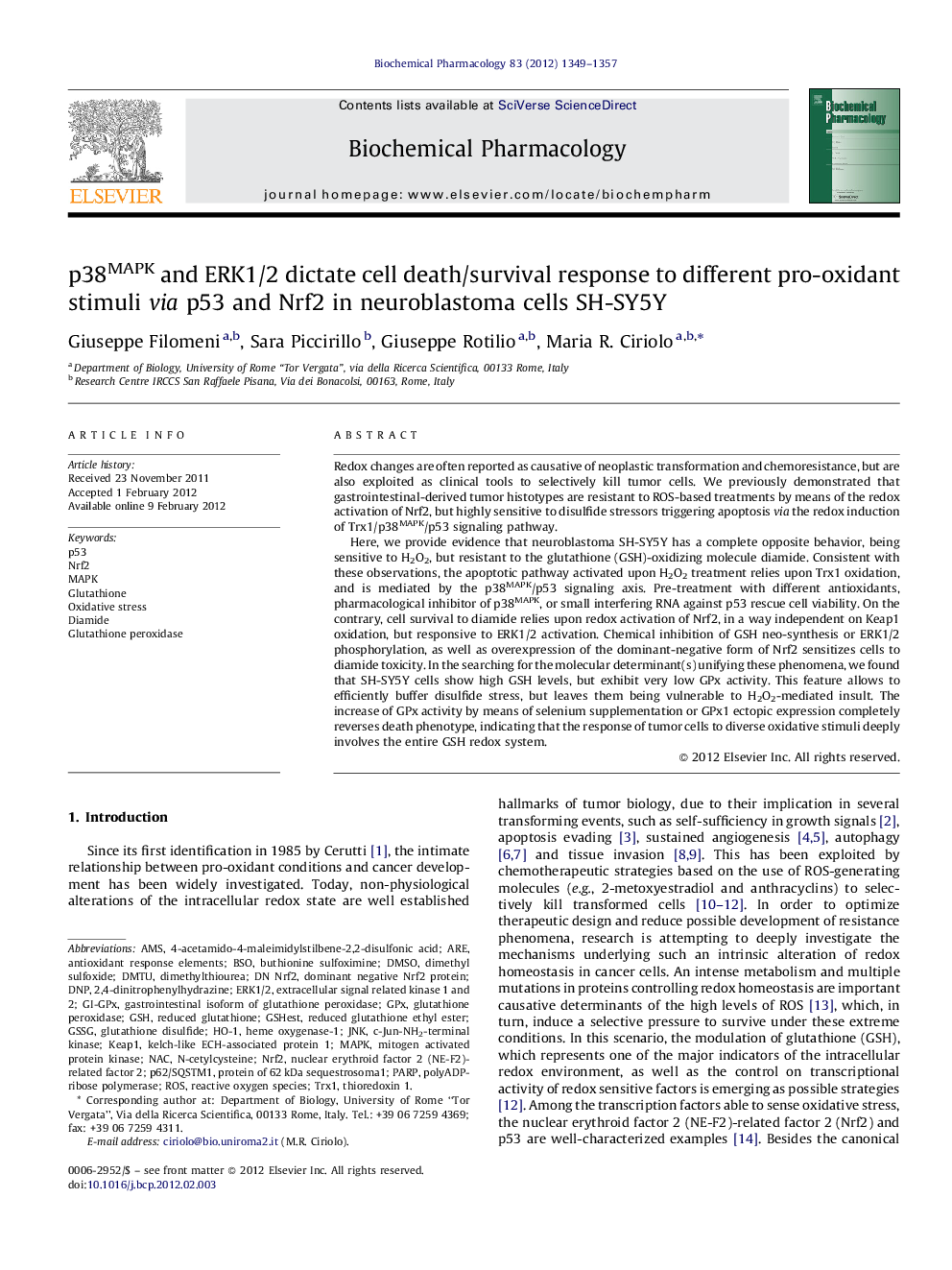| Article ID | Journal | Published Year | Pages | File Type |
|---|---|---|---|---|
| 5823929 | Biochemical Pharmacology | 2012 | 9 Pages |
Abstract
Redox changes are often reported as causative of neoplastic transformation and chemoresistance, but are also exploited as clinical tools to selectively kill tumor cells. We previously demonstrated that gastrointestinal-derived tumor histotypes are resistant to ROS-based treatments by means of the redox activation of Nrf2, but highly sensitive to disulfide stressors triggering apoptosis via the redox induction of Trx1/p38MAPK/p53 signaling pathway.Here, we provide evidence that neuroblastoma SH-SY5Y has a complete opposite behavior, being sensitive to H2O2, but resistant to the glutathione (GSH)-oxidizing molecule diamide. Consistent with these observations, the apoptotic pathway activated upon H2O2 treatment relies upon Trx1 oxidation, and is mediated by the p38MAPK/p53 signaling axis. Pre-treatment with different antioxidants, pharmacological inhibitor of p38MAPK, or small interfering RNA against p53 rescue cell viability. On the contrary, cell survival to diamide relies upon redox activation of Nrf2, in a way independent on Keap1 oxidation, but responsive to ERK1/2 activation. Chemical inhibition of GSH neo-synthesis or ERK1/2 phosphorylation, as well as overexpression of the dominant-negative form of Nrf2 sensitizes cells to diamide toxicity. In the searching for the molecular determinant(s) unifying these phenomena, we found that SH-SY5Y cells show high GSH levels, but exhibit very low GPx activity. This feature allows to efficiently buffer disulfide stress, but leaves them being vulnerable to H2O2-mediated insult. The increase of GPx activity by means of selenium supplementation or GPx1 ectopic expression completely reverses death phenotype, indicating that the response of tumor cells to diverse oxidative stimuli deeply involves the entire GSH redox system.
Keywords
BSOGSSGAMSHO-1DNPPARPGPXNACGSHNrf2Heme oxygenase-1c-Jun-NH2-terminal kinasep53JnkGI-GPx2,4-dinitrophenylhydrazinekeap1DimethylthioureaDMSODMTUERK1/2MAPKp62/SQSTM1ROSTrx1buthionine sulfoximineOxidative stressThioredoxin 1DiamideDimethyl sulfoxideantioxidant response elementsAREKelch-like ECH-associated protein 1mitogen activated protein kinasepolyADP-ribose polymerasereduced glutathioneGlutathioneglutathione disulfideglutathione peroxidaseReactive oxygen species
Related Topics
Health Sciences
Pharmacology, Toxicology and Pharmaceutical Science
Pharmacology
Authors
Giuseppe Filomeni, Sara Piccirillo, Giuseppe Rotilio, Maria R. Ciriolo,
